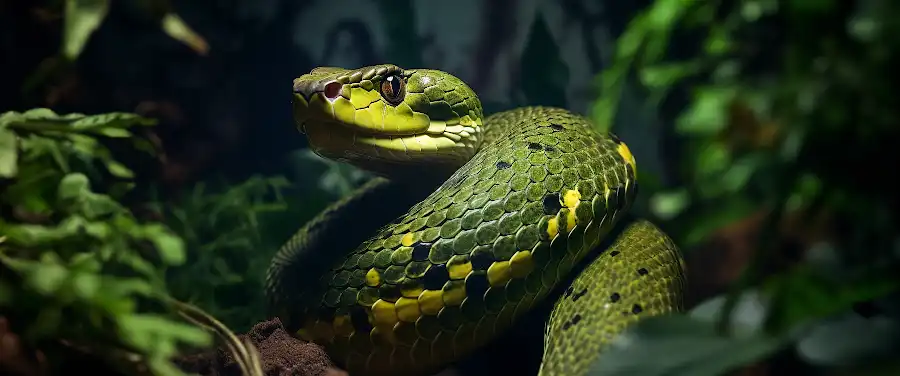
Feeling a little shiver run down your spine every time you walk through your backyard, worrying about running into a snake? Dealing with snake issues is certainly not for the faint-hearted. We know what you’re thinking: there ought to be an easy solution, right? Perhaps you’re hoping that using snake repellents could be the no-fuss pest solution you’ve been dreaming about.
Well, hold that thought. As we venture into the world of snake repellents, it’s important we separate the fact from the fiction. There’s a huge market out there trying to sell us these seemingly magical solutions. The big question here is, do snake repellents actually work? Or are we just hissing in the wind here?
In this article, we’ll be unraveling the truth behind snake repellents’ efficacy. No more slithering around the subject or getting entangled in the weeds; just the plain unadulterated truth. So, buckle up, and let’s put this commonly proposed snake solution under the microscope. But before we delve into that, let’s dig a bit deeper and understand what exactly snake repellents are.
What Attracts Snakes to the Home and Garden?

Your cozy home and lush garden can unwittingly become the perfect residence for slithery, sneaky snakes. Several factors can make your living spaces attractive to these reptiles. Some of these snake attractants include lose heaps, abundant food sources, and certain types of vegetation that provide an ideal hiding spot.
Interestingly, these serpents don’t just wander into homes and gardens due to random exploration. Just like any other creatures, they follow the trail of food, shelter, and mate. That’s why the presence of rodents, frogs, and insects in your home or garden can potentially lure in snakes. Overgrown grass, log piles, and compost heaps create the perfect snake habitats, providing ample place to slither and hide.
Moreover, your geographical location and climate influence can also play a vital role in snake appearances. Warmer climates and region near water bodies tend to attract a variety of snake species, increasing the likelihood of finding one in your backyard.
How Can These Factors Be Controlled to Minimize Snake Presence?
Essentially, controlling these aspects becomes your best bet against a potential snake invasion occupying your home and garden. Remember, prevention is always better than a cure. Now, let’s talk about preventive measures you can implement.
Firstly, begin with regular home and garden cleaning practices. Reducing clutter, mowing the lawn regularly, and sealing cracks and holes in your walls, doors, and windows helps eliminate possible hiding spots for snakes. Furthermore, controlling the rodent population can remove the food source, discouraging these invaders.
Using professional services adds an extra layer of protection to your snake prevention strategies. These pest control experts have the knowledge and tools to provide effective solutions, further minimizing any snake threats.
Remember, a clean home, and a well-kempt garden is not just pleasing to the eyes but also discourages unwanted visitors like snakes. To ensure best practices in maintaining a snake-free environment, check this link provided by the Centers for Disease Control and Prevention.
Up next, we explore the controversial debate in snake control – do snake repellents actually work? Stay tuned to uncover the truth behind the use of snake repellents.
Conclusion
In our quest to co-exist harmoniously with the animal kingdom, we often explore various measures. One such measure is the use of snake repellents, especially in areas prone to snake sightings. The idea of a repellent is inherently appealing; it conditions us to believe we can keep potentially dangerous snakes at bay. But do they live up to their promise? Or are we merely falling victims to a clever marketing strategy?
The efficacy of snake repellents has been the subject of many studies and debates. Many claim that these products offer peace of mind and protect your home and loved ones from the threat of snakes. However, the truth may be a tad less comforting. The problem stems from the nature of snakes themselves – they are stubborn creatures, driven mainly by their need for food, water and shelter. As such, the chemicals found in most snake repellents do little to deter them from their route or area of interest.
Snake repellents typically emit a strong smell designed to confuse or scare off snakes. While this might work in theory, in reality, it is far from foolproof. Snakes don’t primarily rely on their sense of smell. They use a combination of heat-sensing capabilities, vision, and vibrations to navigate their environment. Therefore, a mere unpleasant scent is unlikely to dissuade a determined snake.
Apart from the lack of evidence supporting the efficacy of snake repellents, they also come with environmental and health concerns. Many snake repellents use powerful chemicals that can harm other animals, the surrounding environment, and potentially, humans.
In conclusion, based on the examinations conducted so far, snake repellents may not provide the sure-fire solution many hope for. This calls for taking greater preventive measures such as eliminating food sources, maintaining a clean environment, and calling in professional animal control when necessary. Moreover, educating ourselves about snakes, their habits, and reactions can go a long way in managing our fears and demonstrating responsible behavior.
Remember, nothing can replace the importance of due diligence and humane, responsible interaction with the world around us.




